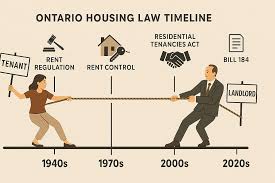Old-age homes, also known as retirement or long-term care facilities, play an important role in supporting the aging population in Canada. However, their increasing prevalence can have several negative effects on the real estate market, influencing housing supply, demand dynamics, property values, and overall community development patterns.
Firstly, the expansion of old-age homes often reduces the availability of traditional housing stock. As more land is allocated for the construction of large-scale care facilities, there is less space available for new residential developments such as single-family homes, townhouses, or affordable rental units. This limited supply, especially in urban areas where land is already scarce, can exacerbate housing shortages. In cities like Toronto and Vancouver, where real estate prices are already high, diverting land to non-market housing such as retirement residences can drive up the cost of available residential property, making homeownership less attainable for younger families.
Secondly, the concentration of old-age homes can distort local housing demand. When seniors sell their homes to move into care facilities, there is often a temporary increase in housing supply. However, these properties tend to be older and located in suburban or rural areas, where demand from younger buyers may be weaker due to limited access to jobs and amenities. This imbalance can lead to slower sales and declining property values in those neighborhoods. Meanwhile, the demand for properties near newly established care homes may increase, raising prices in those pockets and contributing to uneven market dynamics across regions.
Thirdly, old-age homes can alter neighborhood appeal and demographic balance, indirectly influencing real estate desirability. Areas with a high concentration of retirement facilities might experience reduced vibrancy, as these communities cater primarily to seniors rather than families or working professionals. This demographic shift can lower demand from younger buyers, who often seek dynamic neighborhoods with schools, recreation centers, and employment opportunities. As a result, property values in such regions may stagnate or decline, discouraging further private investment and reducing long-term market vitality.
Additionally, old-age homes often generate lower property tax revenues per unit area compared to residential or commercial developments. Because many are non-profit or government-funded, municipalities receive less revenue to reinvest in infrastructure and community development. This fiscal limitation can affect local amenities and public services, further diminishing neighborhood attractiveness and, consequently, real estate values. In smaller towns or rural regions, where one or two such facilities can dominate local land use, the economic impact can be particularly pronounced.
Finally, the rising institutionalization of elderly care may weaken the intergenerational housing cycle. Traditionally, seniors downsizing or living with family members helped free up housing stock for younger buyers, maintaining fluidity in the market. However, when older adults move into institutional care, their properties may remain unsold for long periods, especially in slow markets. This disrupts normal turnover rates and can lead to localized housing stagnation.
In conclusion, while old-age homes are essential for supporting Canada’s aging population, their growth can negatively affect the real estate market by reducing housing supply, distorting demand, lowering neighborhood desirability, and limiting municipal revenue. Policymakers must balance the need for senior care infrastructure with sustainable urban planning strategies that protect housing affordability and market stability across generations.
Search
Categories
Recent posts
Tags
- a louer
- affordable apartments Toronto
- affordable housing
- affordable housing solutions Canada
- Air Filters
- air quality
- apartment
- apartment close to public transport
- apartment for rent
- apartment for rent montreal
- apartment for rent Toronto
- apartment insurance
- appartement
- appliances
- ARTICLE
- available for rent
- background check
- bacteria
- best city to live in canada
- best healthcare
- bicycle
- bicycle path
- bike lane
- bike path
- bikes
- bill 16
- burglar
- buy a house
- buying a house
- carbon monoxide detector
- cars
- centris
- city
- cleaning
- cleaning products
- cleaning wood floors
- closet
- closet space
- clothing organizer
- compact rental units
- condo
- condo association laws
- condo fees
- condo for rent
- condo insurance
- construction budget
- construction contractors
- construction cost
- credit check
- decorating room
- digital transaction
- door lock
- doors
- downtown micro apartments
- electricity
- employment verification
- energy consumption
- energy cost
- energy saving
- engineered hardwood
- fire alarm
- fire detector
- fire extinguisher
- floor
- flooring
- for rent
- For rent in Montreal
- For rent in Toronto
- For rent in Vancouver
- for sale
- furniture
- gas
- healthy candles
- healthy lifestyle
- home
- house
- house for rent
- house for sale
- house garden
- house insurance
- house locks
- house plants
- immigrant
- importance of water leak detector
- indoor plants
- insurance
- intergenerational home
- intergenerational living
- interior designer
- investment
- landlord
- lease
- lease responsibility
- long term care facility
- low crime
- mattress
- micro-apartments Vancouver
- micro-units Toronto
- mls
- move to canada
- moving company
- Moving to canada
- moving truck
- multigenerational home
- multiplex
- nano-suites
- nano-suites Toronto
- new apartment
- new color
- oil
- old age home
- online house purchase
- Ontario
- paint colors
- passive income
- pet friendly apartment
- pet friendly plants
- planning for vacation
- plants
- porcelain tile
- property
- questions for apartment rental
- real estate
- real estate agent
- real estate broker
- real estate online
- real estate transaction
- realtor
- renal history
- rent
- rent an apartment
- rent control
- rent obligations
- rental
- rental board
- rental scam
- renting
- residential income
- residential lease
- residential rental
- revenue property
- safe area
- safe candle in apartment
- safe candle in house
- safe candles
- safety
- scam
- security
- sell a house
- seniors residence
- small apartments Vancouver
- smoke detector
- social media and real estate
- soy candle
- soy candles made with essential oils
- storage space
- student apartment
- student housing
- tenant
- tiny rentals Canada
- traffic
- trending color
- trending paint
- university student rental
- ventilation
- vinyl floor
- water alarm
- water damage
- water leak detector
- window frame
- window manufacturer
- windows
- wood floors



